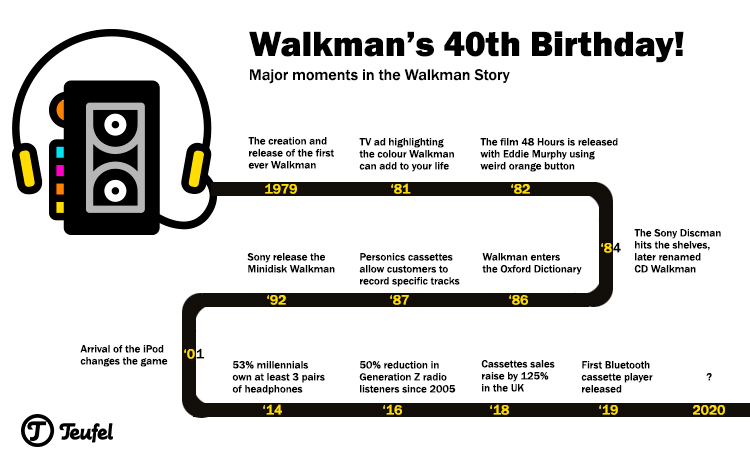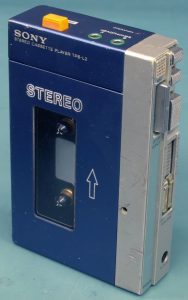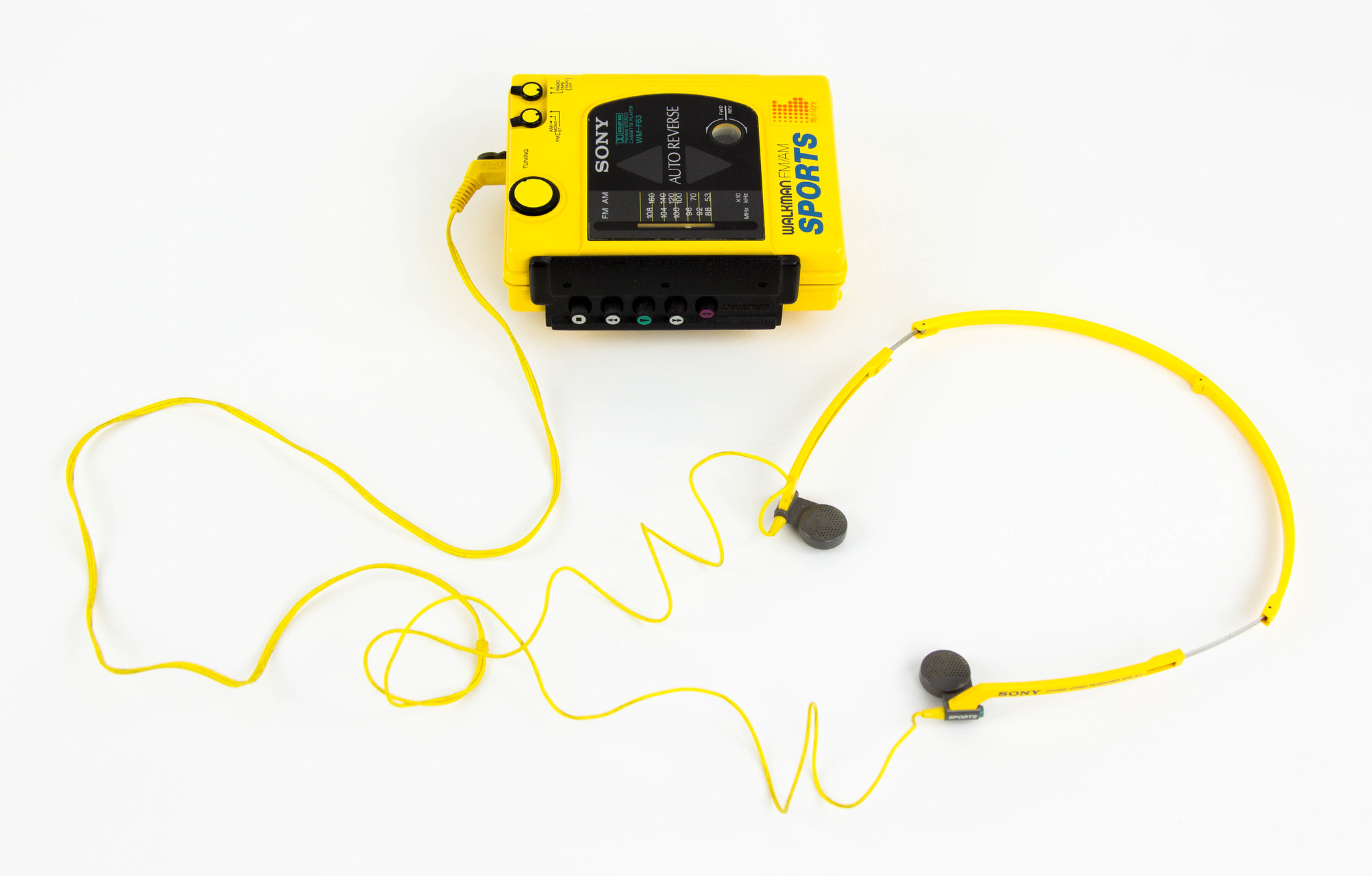The Sony Walkman celebrated its 40th birthday this year. The beloved handheld portable sound device got us shaking like nothing did before. It completely changed how the world experienced music. However, despite the fond memories, the Walkman wasn’t so genial as one might think. We took a look into the history of the Walkman, its humble beginnings and the start of portable sound.
The impact of the Walkman
The 80s belonged to the Walkman. It didn’t matter who you were, how old you were – the Walkman united everybody. Suddenly, mixtapes were being created across the land for long-haul trips or as gifts for friends and lovers. For the first time, music became a very personal experience. Listeners could add a soundtrack to their daily lives, without annoying others.
At the height of its success in the 80s, exercise time increased by 30%. Users clearly enjoyed a workout with a beat. By 1986, the word Walkman officially entered the Oxford Dictionary, which can’t be said about many products.
According to Times magazine “the unprecedented combination of portability and privacy made it the ideal product for thousands of consumers looking for a compact portable stereo that they could take with them anywhere.”

Inspiration and follow ups
The Walkman paved the path for Personics (1987). It was a unique cassette that let customers select particular songs that they wanted to buy. They would then record the songs on to the cassette instead of buying the whole album. With Personics, customers could be pickier with what they wanted to hear by creating their own tapes. Thus listening to music became more on demand and personalised.
After the original cassette-playing Walkman came the CD version, aptly called the Discman (1984). However sales were disappointing, and the device was renamed CD Walkman. Clearly, audiences were still on the cassette hype. The next major development in 1992 was the MD Walkman. It was a mini-disk player. Unlike the CD Walkman, which gained a lot of attention years after its original release, the MD Walkman never took the limelight. The last major development, of course, was the MP3 model. But at this point Apple had already dominated the market with the iPods. Despite these products being widely used nothing could outshine the original excitement and cultural impact of the 1979 introduction of Sony Walkman cassette player.

The creation of the first Walkman
Everything starts with an idea and in the case of the Walkman it was the vision of Sony Founder and Chief Advisor Masaru Ibuka. He liked to listen to classical music on long-haul business flights. However, he felt the current Sony personal cassette player the Pressman (also known as the TC-D5), was too large and unpractical. So, Iubka turned to the Sony tape recorder division, led by Kozo Ohsone and asked them to design something for him that would be better for on the go. In order to shrink the device, they removed the record function, which traditionally took up a lot of space. Ibuka loved the result and said something similar should be brought to the market. The birth of TPS-L2, the first ever Sony Walkman.
Naming of the Walkman
The name was a play on words with Pressman, the product it was based on. Ibuka originally had doubts about the name Walkman, worrying that the direct translation of Japanese wouldn’t float in foreign markets. The product was originally released in the US as “Sound-About” and in the UK as “Stowaway”. However, the product was soon renamed Walkman for all markets, after it received a positive reception in Sony’s overseas offices.
An unusual introduction for press
The power of press can never be undermined. It doesn’t matter how great your product is, you have to know how to sell it. And that’s exactly what Sony knew how to do. On June 22, 1979 the Walkman was released in Tokyo, Japan. At the press conference journalists were taken to a major park, Yoyogi and each given a Walkman to use. They then heard an explanation of the product via the Walkman. Staff gave a demonstration of how to use the product in different situations. This might not sound very revolutionary in today’s terms, with 85% of millennials owning at least 3 pairs of headphones. However, the idea of using headphones on the go at a park in 1979 was crazy and unheard of. Of course, it was only up from here and as of 2009 over 385 million Walkman devices have been sold.
Here’s Sony’s latest Walkman add, to celebrate its evolution over the 40 years:
The not-so-original Sony Walkman features
The Walkman wasn’t a massive leap for audio technology. Rather, Sony took technology that was already available and compressed it down to a portable size. One of the best features of the original Walkman, alongside its portability, was the fact it offered stereo sound. Its housing was metallic. A mix of aluminium and plastic covered in a leather case. To get out and about users would just need two AA batteries.
When it came to sound control it was very basic. There were no options to modify the bass, or play with the levels that we are used to with modern technology. The frequency response was 41-12.000Hz, with the max output being 15mW. Which compared to Teufel’s REAL BLUE NC with a frequency repose 20 -2000 Hz, shows how technology is always improving.
Sony wanted to ensure that the Walkman wasn’t too costly, so made sure when creating the Walkman that the end product would still be affordable. Though beloved, the Walkman originally received criticism for not supporting AM/FM radio, as well as not having a record feature. We just love to pick holes.

Weird original features
Originally, the creators thought that people would want to listen together, so the Walkman came with two headphone ports. And oddly, there was an orange button that once pushed would allow headphone wearers to talk to one another over the music. This feature can be seen in use in the film 48 Hours, when Eddie Murphy’s character is singing Roxanne in prison. The concepts of listening or talking together via the device never kicked off and were dropped in the later models.
Revolution of headphones
Walkman wasn’t just about the portable size of the cassette player but another revolution was the introduction of a new style headphones. Before the average weight of headphones were 400 grams but the Walkman came with headphones weighing just 50 grams. Before the Walkman, headphones weren’t seen as seen as portable devices. They were for home use or in studios. The world’s first creator of portable music player, Andreas Pavel’s, talks about using headphones on the go in the mid-70s and strangers would look at him in awe. However, with the introduction of Walkman, by the mid-80s headphones on the street were the norm. They used this to their advantage with their earlier marketing campaigns. In the example below you can see they portrayed life without headphones was bland:
How we discover new music today
Portable music has had a huge impact on the way we discover music. We already saw how the Personoics made us picky tune hearers, but that’s just the start. The constant rise in headphones salesOpens in new tab and increased interest in streaming services, in particular Spotify, suggest that we are more likely to turn to streaming servicesOpens in new tab to discover new music. Before the Walkman and other portable sound devices, the population relied on the radio to hear new tunes .
A study foundOpens in new tab that between 2005 and 2016 there was an almost 50% reduction in listeners of the Generation Z for AM/FM radio. We now have on-demand services that can better cater to our specific needs. This could mean that we are unintentionally narrowing our music selection. By only playing what we want to hear, meaning it could be harder to be introduced to new artists. Of course, some streaming services are designed to find new artists, but they are not so popular as other streaming services.
It’s cool to spool again
Never underestimate the power of nostalgia or the hipster. Despite smoother methods being around to listen to music, people are turning back time and as result cassettes are getting a bit more limelight. In 2018 cassettes sales soared by 125% with over 50,000 cassette albums being bought in the UK, the highest volume in 15 years. Some are pointing the finger to Guardian of The Galaxy for introducing cassettes to younger audiences, or stirring nostalgia in older viewers.
The new cassette players
A startup in Hong Kong, Ninm Lab have brought their own revised Walkman to the market, but this time with 5.0 Bluetooth. A mix of the old and new. Admittedly there is something more attractive about listening to music with a cassette player, however once the novelty wears off, the impractical nature of using a cassette player (limited selection of music, as well as carrying cassettes around) users could be turning back to the ease and endlessness offered by the online streaming world.
Conclusion
The Walkman had to be one of, if not the, biggest success stories of Sony. They weren’t the first to come up with the idea and the technology was not ground-breaking. But to create a device that talks to the world, and design it in a way so that the majority can afford it was genius. The industry has moved on a lot since Walkman was first around. However, it’s a positive product that brings smiles to all those that had the lucky chance to come into contact with it. It will be interesting to see what comes next, but I think we can all be certain, nothing will shakeup the world of music as much as the Walkman did.



